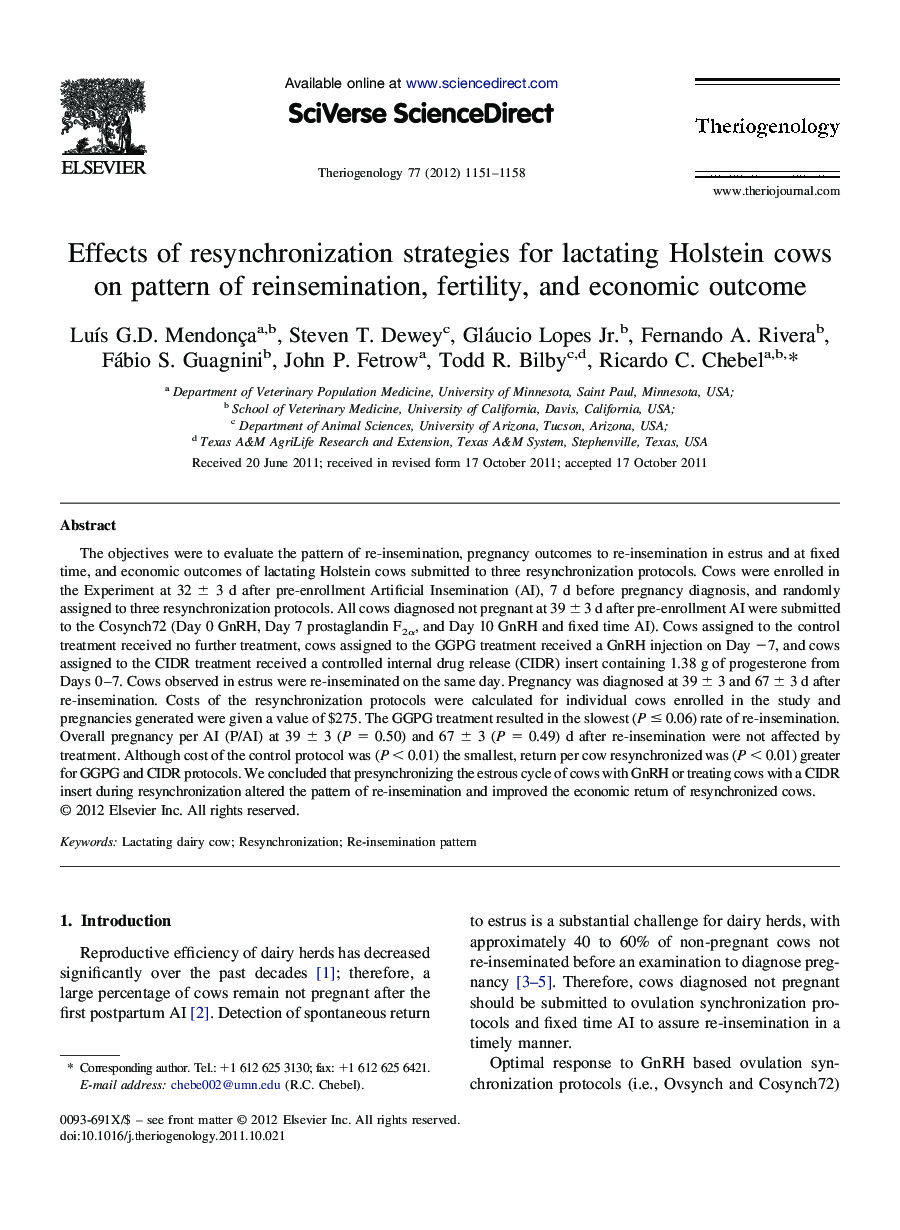| Article ID | Journal | Published Year | Pages | File Type |
|---|---|---|---|---|
| 2095581 | Theriogenology | 2012 | 8 Pages |
The objectives were to evaluate the pattern of re-insemination, pregnancy outcomes to re-insemination in estrus and at fixed time, and economic outcomes of lactating Holstein cows submitted to three resynchronization protocols. Cows were enrolled in the Experiment at 32 ± 3 d after pre-enrollment Artificial Insemination (AI), 7 d before pregnancy diagnosis, and randomly assigned to three resynchronization protocols. All cows diagnosed not pregnant at 39 ± 3 d after pre-enrollment AI were submitted to the Cosynch72 (Day 0 GnRH, Day 7 prostaglandin F2α, and Day 10 GnRH and fixed time AI). Cows assigned to the control treatment received no further treatment, cows assigned to the GGPG treatment received a GnRH injection on Day −7, and cows assigned to the CIDR treatment received a controlled internal drug release (CIDR) insert containing 1.38 g of progesterone from Days 0–7. Cows observed in estrus were re-inseminated on the same day. Pregnancy was diagnosed at 39 ± 3 and 67 ± 3 d after re-insemination. Costs of the resynchronization protocols were calculated for individual cows enrolled in the study and pregnancies generated were given a value of $275. The GGPG treatment resulted in the slowest (P ≤ 0.06) rate of re-insemination. Overall pregnancy per AI (P/AI) at 39 ± 3 (P = 0.50) and 67 ± 3 (P = 0.49) d after re-insemination were not affected by treatment. Although cost of the control protocol was (P < 0.01) the smallest, return per cow resynchronized was (P < 0.01) greater for GGPG and CIDR protocols. We concluded that presynchronizing the estrous cycle of cows with GnRH or treating cows with a CIDR insert during resynchronization altered the pattern of re-insemination and improved the economic return of resynchronized cows.
